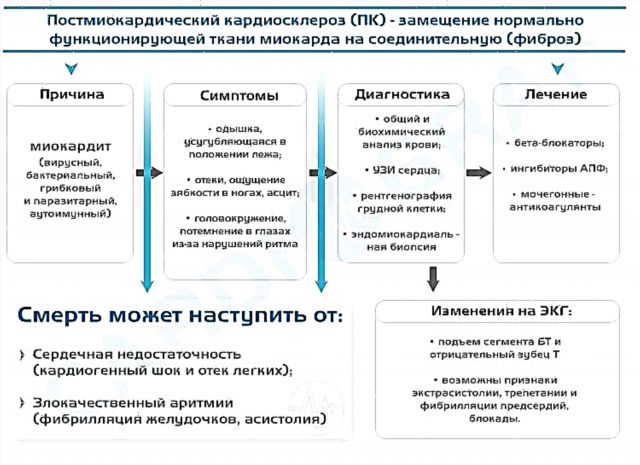Obturation of the nasal passages with adenoid vegetations negatively affects the patient's well-being and greatly increases the risk of infection of the hypertrophied organ.
 Untimely therapy of benign tumors in the fornix of the nasopharynx entails not only a violation of nasal breathing, but also the development of local complications. What should be the treatment of adenoids without surgery? It should be understood that conservative methods of therapy are effective in the treatment of 1 and partially 2 degrees of development of adenoids. It is impossible with the help of medicines to reduce the highly overgrown glandular tissue of the pharyngeal tonsil to its normal physiological size. Drug therapy and modern physiotherapy procedures can prevent further hyperplasia of the immune organ.
Untimely therapy of benign tumors in the fornix of the nasopharynx entails not only a violation of nasal breathing, but also the development of local complications. What should be the treatment of adenoids without surgery? It should be understood that conservative methods of therapy are effective in the treatment of 1 and partially 2 degrees of development of adenoids. It is impossible with the help of medicines to reduce the highly overgrown glandular tissue of the pharyngeal tonsil to its normal physiological size. Drug therapy and modern physiotherapy procedures can prevent further hyperplasia of the immune organ.
Contraindications to adenotomy
How to get rid of adenoids without surgery? Similar questions are asked by patients who have direct contraindications for surgical intervention. Even in the case of a strong proliferation of adenoid vegetations, it is not always possible to resort to surgical treatment. Common contraindications for adenotomy include:
- exacerbation of infectious diseases;
- blood diseases;
- diabetes;
- abnormal structure of the soft palate;
- large crevices in the hard palate;
- oncological diseases;
- bleeding tendency.
Important! It is undesirable to remove adenoids in the absence of absolute indications, since excision of the pharyngeal tonsil leads to a significant decrease in local immunity.
As a rule, treatment without surgery is prescribed to patients at the initial stages of the development of pathology. With a timely visit to a doctor, it is possible not only to eliminate the hypertrophy of the immune organ, but also to prevent frequent relapses of ENT diseases.
Conservative therapy
What should be the conservative treatment for adenoids? Timely started drug therapy allows you to eliminate the obstruction of the nasal passages and restore the physiological changes in the nasopharyngeal tonsil. But before using medications, you need to consult with an otolaryngologist. There is no single treatment regimen for ENT pathology. When choosing medicines, the specialist takes into account the patient's history data, concomitant clinical manifestations and the reasons for the proliferation of adenoids.
For the treatment of adenoid vegetations, the following types of medications can be used:
- vasoconstrictor drops;
- immunostimulants;
- antiallergic agents;
- antiseptics;
- solutions for rinsing the nose;
- homeopathic medicines;
- vitamin and mineral complexes.
Only an integrated approach to solving the problem can quickly eliminate the symptoms of tonsil hypertrophy and prevent its further growth. If necessary, patients are prescribed physiotherapeutic treatment, which has a beneficial effect on trophism and regeneration of adenoid tissues.
Medicines overview
How to cure adenoids with pharmacotherapy? Any medications can only be prescribed by the attending physician after a thorough examination of the nasopharynx and determining the degree of proliferation of glandular tissues. The most effective treatment is considered to be with the use of antiallergic agents and local antiseptics.
Usually, the following types of medications are included in the treatment regimen for adenoid vegetations:
| Group of medicines | Name of drugs | Purpose of appointment and principle of operation |
|---|---|---|
| antihistamines | "Clemastine" "Hifenadine" "Tavegil" | block histamine receptors, thereby reducing the severity of allergic reactions - inflammation, swelling, itching, etc. |
| vasoconstrictor | "Sanorin" "Naftizin" "Nazol" | reduce the permeability of blood vessels and restore the outflow of lymph from the mucous membranes of the nasal cavity, due to which nasal breathing is normalized |
| antivirus | Ergoferon Arbidol Tamiflu | inhibit the reproductive function of virions, as a result of which the regression of catarrhal processes in hyperplastic lymphoid tissue is accelerated |
| immunostimulating | "Splenin" "Timalin" "Pentoxil" | stimulate cellular and humoral immune responses, thereby increasing nonspecific immunity and the body's resistance to respiratory infections |
| anti-inflammatory | Celecoxib Diflunisal Sulindak | interfere with the biosynthesis of serotonin and histamine, which reduces the severity of inflammatory reactions in soft tissues |
| reparative | "Abisib" "Polyphepan" "Adgenol" | normalize blood supply to tissues, activate metabolic processes and regeneration of damaged cells |
| homeopathic | "Oscillococcinum" "Delufen" "Lymphomyosot" | accelerate regeneration processes, stimulate nonspecific immunity and prevent tissue proliferation |
| systemic antibiotics | "Klacid" "Sumamed" "Zinnat" | destroy pyogenic bacteria that cause purulent inflammation of the pharyngeal tonsil (used for adenoiditis) |
Important! The intake of vitamin-mineral complexes contributes to the regression of pathological processes in lymphadenoid accumulations.
Adenoid vegetation grows due to frequent inflammation of the ENT organs. Relapses of diseases occur due to a decrease in the reactivity of the body, which is facilitated by hypovitaminosis and poor nutrition. It is possible to increase local and general immunity by taking vitamin and mineral complexes - "Polivit", "Aevit", "Duovit", etc.
Irrigation of the nasopharynx
 Sanitation of the nasal cavity is one of the most effective non-surgical methods of treating adenoids. Due to a decrease in local immunity and blockage of follicles in the glandular tissue, the pharyngeal tonsil becomes a breeding ground for infection. To eliminate the pathological flora and resume the functioning of the immune organ, regular washing of the nasopharynx allows.
Sanitation of the nasal cavity is one of the most effective non-surgical methods of treating adenoids. Due to a decrease in local immunity and blockage of follicles in the glandular tissue, the pharyngeal tonsil becomes a breeding ground for infection. To eliminate the pathological flora and resume the functioning of the immune organ, regular washing of the nasopharynx allows.
Can saline solutions be used to cleanse viscous secretions, detritus and pathogens from the nasal cavity? As practice shows, irrigation of the amygdala with hypertonic solutions has a beneficial effect on the functioning of the adenoid tissue. The drugs have a pronounced antiseptic and antimicrobial effect, which helps to facilitate breathing and reduce the size of the nasopharyngeal tonsil.
For irrigation of the nasal cavity during adenoid vegetations, it is recommended to use the following types of antiseptic solutions:
- "Physiomer" - a preparation based on sea water, which cleanses and moisturizes mucous membranes, preventing the development of opportunistic microbes;
- Miramistin is an antiseptic solution that prevents the development of pathogenic viruses and bacteria in lymphoid accumulations;
- "Collargol" is an antiseptic with analgesic effect, which is used to treat purulent adenoiditis and inflammation in the nasopharyngeal mucosa;
- "Euphorbium compositum" is a homeopathic medicine with a pronounced reparative, disinfecting and decongestant effect; helps to reduce frontal tension and facilitate breathing through the nose;
- Dolphin is an isotonic solution of antibacterial action, which relieves the manifestations of purulent and catarrhal inflammation in the respiratory organs.
For the procedure, it is advisable to use an Esmarch mug, a nasal irrigator or a syringe without a needle.
Features of physiotherapy
How to cure adenoids without surgery? Physiotherapy procedures are an effective method of treating adenoid vegetations, which helps to eliminate obstructions in the airways. Physiotherapy enhances the effect of pharmacotherapy, thereby accelerating the process of restoration of the pharyngeal tonsil.
Depending on the methods and duration of physiotherapeutic treatment, it is possible to achieve a decrease in the size of adenoid vegetations and a significant increase in the body's resistance. The most common hardware procedures that help eliminate adenoids include:
- inductothermy - the effect on hyperplastic tonsil tissues with high-frequency Foucault currents, which promotes muscle relaxation and regeneration of the affected organ;
- drug electrophoresis - the introduction of anti-inflammatory and reparative agents into the hypertrophied tonsil using electrical impulses;
- ultrasound therapy - the effect on adenoid vegetation with ultra-frequency sound vibrations that stimulate redox processes in lymphoid tissues.
Important! To achieve the desired therapeutic effect, you need to undergo a course of physiotherapy, which should consist of at least 8-10 sessions.
Apparatus treatment has a pronounced physicochemical effect on tissues, due to which the adenoid vegetation is somewhat reduced in size. In addition, physiotherapy procedures increase tissue reactivity, as a result of which the risk of developing inflammation in the respiratory organs is reduced.
Cryotherapy
Cryotherapy of adenoids is a physiotherapeutic procedure that restores the normal functioning of lymphadenoid accumulations. Local processing of soft tissues with ultra-low temperatures leads to freezing of adenoid vegetations, which prevents their further growth.
The full exposure of cryotherapy depends on the degree of enlargement of the amygdala and the maximum is 3 minutes.
Regenerative and immunostimulating cryotherapy of adenoids can be used at stages 1 and 2 of the growth of adenoid vegetations. Unlike surgical intervention, cold treatment is physiological, since it does not cause bleeding and postoperative complications. It should be noted that cryotherapy does not lead to the destruction of surrounding tissues, therefore, after the procedure, the patient does not feel discomfort and pain.
How does cryotherapy of adenoids work? With the help of a special applicator, the affected tonsil is irrigated with liquid nitrogen vapor for several seconds, as a result of which adenoid vegetation is frozen. Subsequent necrotization and exfoliation of hypertrophied tissues leads to complete or partial elimination of choanal obstruction. To completely eliminate adenoid vegetation, you need to go through at least 10-15 cryotherapy sessions.
Radio wave adenotomy
Radio wave adenotomy is a bloodless and non-contact method of removing adenoid tissues, which is based on the evaporation of a hypertrophied tonsil under the influence of high frequency radio waves. Due to the absence of direct contact of lymphoid accumulations with a medical instrument, destruction of pathological tissues occurs exclusively at the cellular level.
 Removal of adenoids by radio wave technique allows surgical operations of almost any complexity. Even in the case of an abnormal structure of the nasopharynx and narrowness of the choanas, non-contact excision of the adenoid tissues allows achieving the necessary therapeutic results. The low-traumatic method of treatment has practically no contraindications for use, therefore it is used to remove adenoid vegetations not only in adults, but also in children.
Removal of adenoids by radio wave technique allows surgical operations of almost any complexity. Even in the case of an abnormal structure of the nasopharynx and narrowness of the choanas, non-contact excision of the adenoid tissues allows achieving the necessary therapeutic results. The low-traumatic method of treatment has practically no contraindications for use, therefore it is used to remove adenoid vegetations not only in adults, but also in children.
The sterilizing effect of radio wave therapy prevents the development of septic inflammation in the operated tissues.
The operation is carried out using the Surgitron apparatus, which is equipped with a radio wave adenotome. The procedure is performed under local anesthesia, which eliminates the likelihood of painful sensations. The radio wave knife excises the adenoid vegetation in one block, so the duration of the operation does not exceed 10-15 minutes. When radio waves come into contact with tissues, blood vessels are cauterized (coagulated), which greatly reduces the risk of bleeding and aspiration of bloody discharge.



